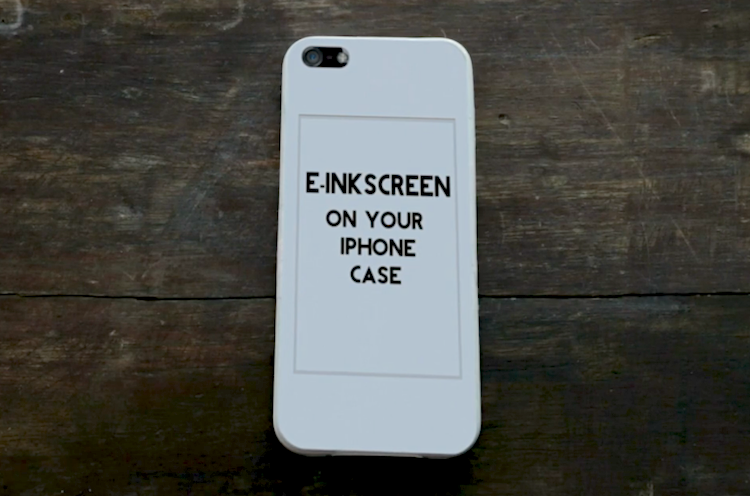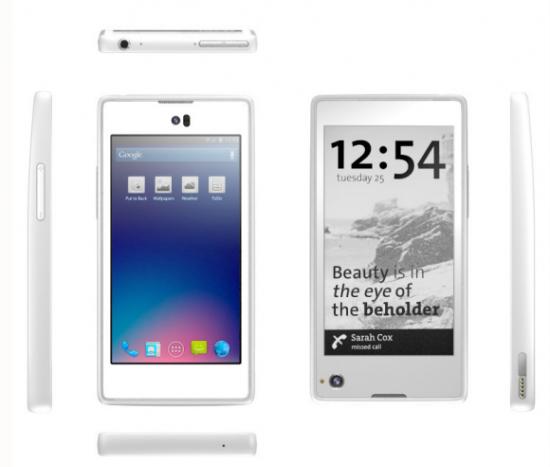
Not long after I started here at PhoneDog, the mobile landscape started to change quite rapidly. Mobile chipset manufacturers cleared a huge hurdle and broke into multi-core architecture territory. Creators of mobile image sensors also bridged a gap, bringing the 3- and 5-megapixel cameras into the new era of 8-megapixels and beyond with notably better glass and software. And displays, especially, have advanced arguably more than any other technology, jumping from VGA (640 by 480 pixels) and HVGA (480 by 320 pixels) to 1080p and as high as 2,560 x 1,600 pixel resolution in the Nexus 10 display.
Radio technology and wireless speeds have vastly improved, memory has more than quadrupled, software and user experience have exponentially improved and the average smartphone size has exceeded all expectations and now exists somewhere between 4.3- and 4.7-inches versus the average 3.5- to 3.8-inches of the past.
Aside from size, however, very little about smartphones has changed externally. They're still the same, mundane rectangular cubes. Some have more rounded corners than others, and some phones now come in an array of colors. But the basic principle of modern smartphone design has not changed in several years; it has only been scaled-up to make room for the ever-growing mobile displays.
Some designers, imagineers and even some mobile manufacturers, however, have tried to change that over the years.
In January, 2011, a drool-inducing concept phone started making its way around the Web. Created by product designer Kristen Larsen, it was simply called Flip and was a futuristic smartphone with three displays and a keyboard all tucked into a neat, slim, folding prism design. The three panels were (hypothetically) connected by durable wire mesh, which would allow the user to configure the displays in an array of positions and transform the overall form factor of the device.
Just one month earlier, LG had applied for some patents detailing a dual-screen setup on a horizontal slider. Much like a slider smartphone with a horizontal QWERTY, these patent entailed a similar design where the keyboard was replaced by a secondary display.
Not long after Flip made its rounds, a multi-display phone actually came to fruition. The Kyocera Echo was announced in February, 2011 and came to market a few months later. In theory, the premise was great. But this phone lacked serious conviction, innovation and polish. It was made of cheap, flimsy plastic and reeked of low-end specifications.
Simply put, at that time, a multi-display smartphone was not logical. The Echo shipped with two batteries in the box, a tell-tale that second display did a number on the phone's stamina.
No less, the dream of a dual-display smartphone lives on today. And at least two companies are taking a much more logical approach – that is, until there is a much-needed breakthrough in lithium-ion battery technology.

Last Monday, I wrote about an iPhone product whose creators are seeking funding via Indiegogo. Called popSLATE, the iPhone case uses the Lightning port to provide power to a secondary E Ink display on the back of the device. The secondary display, which is always-on and only consumes power when information of the display changes, could be used to constantly display incoming notifications, a customized wallpaper or even a book for reading without seriously draining the battery.
And just yesterday, Russian broadband provider Yota announced the YotaPhone. From the front, it looks like any other Android smartphone with rather uninspired design. It has a 4.3-inch 720p LCD JDI display, LTE, 32GB or 64GB of built-in storage, 2GB RAM, 2,100mAh battery, 12-megapixel rear camera and a 1.5GHz dual-core Snapdragon S4 chip. Also, the typical capacitive Android navigation buttons have been replaced with a touch-sensitive strip for gesture-controlled navigation, not unlike the Palm Pre Plus.
There are two clever tricks the YotaPhone has up its sleeve, though. One is the power button; it doubles as a SIM tray to reduce clutter. The other is a 4.3-inch EPD E Ink display around back. Much like popSLATE, this display can be used to display always-on information without any notable damage to the battery life.

Using the Yota-built apps, there is a dedicated button that can switch information to the rear panel. They have also created an API for third-party developers to add rear display functionality to their own apps. But if you're wanting to display just any ol' information on the back, a simple two-finger downward gesture will mirror the current display on the rear panel – think screen capture that immediately gets sent to the back display. That said, since this phone is running Android 4.2, I'm not sure how this gesture would work without conflict with the Quick Settings feature – also accessed by a two-finger swipe down – Google added in the latest update.
There is one other problem with the YotaPhone. The E Ink display is not touch-sensitive. Instead, there is a capacitive area below the display (beside the camera, which is also fairly poor placement). This significantly limits the functionality of the rear panel as the information on the backside of the phone can only be manipulated by a tiny, ambiguous touch-sensitive strip and a couple different gestures.
Still, the rear E Ink display is a great concept that appears to be gaining some traction. It makes use of the largest waste of real estate on every smartphone, the back, which is usually totally blank save for some poorly placed, tasteless branding. I can't say that I will back popSLATE (I'm still not sure if I'm keeping my iPhone) or buy a YotaPhone once it's released internationally, but I hope the secondary E Ink display concept lives on and carries over into more devices.
And, eventually, if a battery technology breakthrough ever happens, I would love to see the Flip concept – or something along those lines, at least – come to life. As long as the battery can sustain a second display, it's a win-win.
What do you think about popSLATE or the YotaPhone, folks? Is a second display something you've always wanted on your smartphone? Or is it a useless feature? I know I definitely see some benefits of an always-on, low-power E Ink display. Notifications on constantly display, for one.